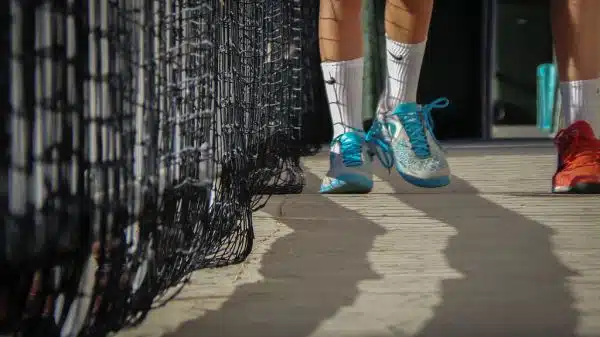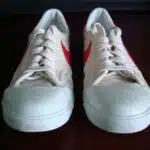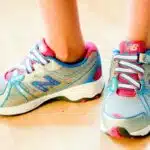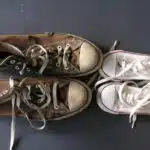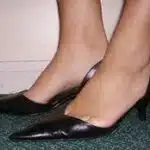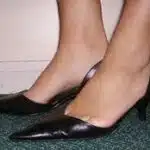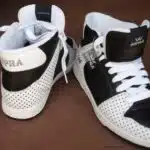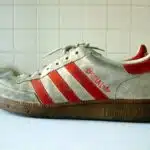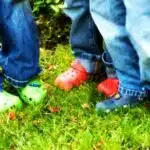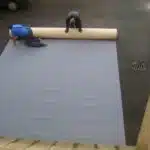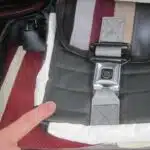As an athletic shoe cleaning and care specialist, I have seen the impact that regular maintenance can have on the lifespan of a pair of tennis or athletic shoes. Keeping your shoes clean and in good condition not only extends their use but also improves their performance, providing better traction, support, and comfort during physical activity. Proper cleaning and care are essential to maintain the functionality of your athletic footwear and prevent unnecessary wear and tear.
In this article, we will explore the best practices for cleaning and caring for tennis and athletic shoes. We’ll discuss the materials you need to keep your shoes clean, how to remove stubborn stains, how to protect them from damage, as well as other tips to extend the lifespan of your footwear. By following our advice, you can ensure that your athletic shoes remain in top condition and continue performing at their best for years to come.
Understanding The Importance Of Shoe Maintenance
Athletic and tennis shoes are essential to individuals who engage in sports activities. These shoes provide the necessary support and protection for our feet during physical exertion. However, with frequent use, these shoes can accumulate dirt, stains, and odors that can damage their overall quality. Therefore, the importance of regular cleaning cannot be overemphasized.
Regular shoe maintenance is critical to enhance your footwear’s longevity and performance. By keeping your athletic shoes clean, you prevent the accumulation of dirt and debris that can cause premature wear and tear. Furthermore, a dirty pair of shoes can harbor bacteria that cause foul smells or infections such as athlete’s foot. Therefore, regular cleaning ensures that your athletic shoes remain hygienic while maintaining their original appearance.
Prevention is better than cure when it comes to shoe damage. Regular cleaning helps identify issues early on before they become more significant problems that require costly repairs or replacements. In addition to preventing damage, regular cleaning also helps preserve the structural integrity of the shoe materials like leather or synthetic fabric. Therefore, by taking care of your athletic shoes regularly, you avoid unnecessary expenses while ensuring maximum comfort and performance during physical activities.
To start caring for your tennis or athletic shoes properly, gathering the necessary materials for cleaning is crucial.
Gathering The Necessary Materials For Cleaning
To properly clean and care for your tennis and athletic shoes, it is essential to gather the necessary materials beforehand. Choosing appropriate cleaners is crucial in maintaining the quality of your shoes. Using harsh chemicals or cleaning agents may cause discoloration or damage to the material, so it is best to stick with milder options like soap and water or specialized shoe cleaner.
Aside from selecting appropriate cleaners, proper handling and storage of cleaning materials are also important factors to consider. Make sure to keep them in a cool, dry place away from direct sunlight or heat sources. This will help prevent any deterioration or contamination of the cleaning solutions. When using them, be mindful of the instructions and dilution ratios provided by the manufacturer.
By ensuring that you have all the necessary materials before starting your shoe cleaning process, you can save time and effort while achieving optimal results. In the next section, we will discuss how to remove dirt and debris from your shoes effectively using some simple techniques that you can easily do at home without needing any special tools or equipment.
Removing Dirt And Debris From Shoes
Removing dirt and debris from athletic shoes can be compared to sweeping the floor of a house. Just like how you sweep the floors to remove dust, debris, and other small particles, brushing techniques are used to clean off dirt from shoes. The right brush is essential when it comes to cleaning athletic shoes. A soft bristled brush is recommended as it helps remove visible dirt without damaging the shoe’s material.
Cleaning solutions also play a vital role in removing dirt and debris from tennis and athletic shoes. Using gentle cleaning solutions such as mild soap or detergent mixed with warm water helps break down stubborn stains on the shoes’ surface. However, one should avoid using bleach or harsh chemicals as they tend to weaken the shoe’s material over time.
To start cleaning your athletic shoes, remove any excess dirt using a soft-bristled brush gently. Then dip your brush into the cleaning solution of your choice and scrub the surface of the shoe thoroughly. Once you have removed all visible dirt, use a damp cloth to wipe away any remaining residue. Remember always to let your shoes air dry naturally after cleaning them.
In preparing for tackling tough stains on athletic shoes, there are some helpful tips that one should know beforehand. One of these tips includes identifying what type of stain you will need to tackle before choosing a cleaning solution or technique. By doing so, you ensure that you are not only efficiently removing the stain but also preventing any damage caused by using inappropriate methods or solutions.
Tackling Tough Stains On Athletic Shoes
Athletic shoes are subjected to heavy use, which can lead to tough stains that require special care. Removing grass stains and tackling grease stains are some of the most challenging tasks when it comes to cleaning athletic shoes. Fortunately, there are several ways to tackle these tough stains with ease.
Firstly, removing grass stains requires a bit of elbow grease. Begin by removing any excess grass or dirt from the surface of the shoe using a stiff brush or toothbrush. Then apply a small amount of laundry detergent directly onto the stain and use a soft-bristled brush to gently scrub the stain in circular motions. Rinse the shoe under cold water and repeat if necessary until the stain is removed.
Secondly, tackling grease stains requires a different approach. Start by applying a small amount of dish soap onto the affected area and let it sit for about 15 minutes. Using a damp cloth, gently blot the stain until it begins to lift off the surface of the shoe. If this doesn’t work, try using rubbing alcohol or white vinegar instead of dish soap.
In conclusion, keeping your athletic shoes clean is essential for maintaining their longevity and performance. By following these tips on removing grass stains and tackling grease stains, you’ll be able to keep your shoes looking their best for longer periods. In the next section, we’ll discuss how to clean tennis shoes properly without damaging them.
Cleaning Tennis Shoes
Having tackled tough stains on athletic shoes in the previous section, it’s now time to shift our focus towards cleaning tennis shoes. One common issue that tennis players face is the accumulation of dirt and grime on their shoes, which can lead to a decrease in traction and overall performance. To illustrate this point, let’s consider a hypothetical situation where a tennis player has been practicing on a clay court for several hours. As a result, their shoes are caked with clay particles and other debris.
To effectively clean your tennis shoes, it’s important to start with the right tools and techniques. One option is to use a DIY shoe cleaner made from natural ingredients such as vinegar and baking soda. Not only is this solution eco-friendly, but it also helps to remove odors and sanitize your shoes. Another tip is to avoid using harsh chemicals or abrasive materials that can damage the fabric or sole of your shoes. Instead, opt for gentle detergents and soft-bristled brushes that can effectively lift away dirt without causing any harm.
Lastly, drying wet shoes properly is crucial for maintaining their shape and preventing mold or mildew growth. After washing your tennis shoes, avoid exposing them to direct sunlight or high heat sources such as dryers. Instead, stuff them with crumpled newspaper or specialized shoe inserts designed for drying purposes. This will help absorb excess moisture while allowing air to circulate freely around your shoes. With these tips in mind, you’ll be able to keep your tennis shoes looking and performing at their best for many matches to come!
Drying Wet Shoes Properly
Drying wet shoes is an important step in shoe maintenance, especially for athletes who engage in various physical activities. Most people tend to use heat sources like heaters, ovens, or dryers to dry their shoes quickly. However, these methods can damage the material of the shoes and destroy their shape. Proper drying techniques are crucial in extending the life of your athletic shoes.
One effective way to dry your wet shoes is by using shoe trees. These devices help maintain the shape of your shoes while they dry. Shoe trees are also useful in preventing creases and wrinkles that may form when wet shoes are left to air dry without support. Simply place the shoe tree inside the damp shoe and let it sit until it absorbs all the moisture.
Another method for drying wet shoes is by air drying them naturally. This method requires patience, but it prevents any damage to your athletic shoes caused by heat sources like ovens or dryers. After cleaning your wet shoes, remove the laces and loosen any straps or buckles before stuffing them with newspaper or a towel. Place your shoes in a well-ventilated area away from direct sunlight and allow them to air dry for at least 24 hours.
Properly drying your athletic shoes will prevent mold growth and foul odors that may develop when they are not dried correctly. Using shoe trees or air drying them naturally are two effective methods you can use to ensure your athletic footwear remains in good condition over time. The next section discusses how you can remove any unpleasant odors from your tennis and athletic shoes without damaging their material or structure.
Removing Odors From Shoes
After properly drying your athletic shoes, it’s now time to tackle the next issue: shoe odor. Shoe odor is a common problem that most athletes encounter. Foul-smelling shoes not only affect an athlete’s confidence but also make them uncomfortable during training and games. To eliminate shoe odor, you need to understand the causes and effective shoe deodorizing techniques.
The main cause of shoe odor is sweat and bacteria buildup inside the shoes. Continuous use of your athletic shoes without proper cleaning can lead to bacteria and fungus growth, which produces a bad smell. The good news is that there are effective natural remedies for shoe odor that you can use at home. For example, you can use baking soda or activated charcoal to absorb moisture and neutralize odors inside your shoes.
Table: Natural Remedies for Shoe Odor
| Natural Remedy | How it Works |
|---|---|
| Baking soda | Absorbs moisture and eliminates odors |
| Tea bags | Absorbs moisture and leaves a pleasant scent |
| Activated charcoal | Absorbs moisture and neutralizes odors |
| Essential oils | Freshens up the shoes with pleasant scents |
Using these natural remedies regularly will help keep your athletic shoes fresh and clean, preventing foul odors from ruining your confidence on the court or field.
To maintain the shape of your athletic shoes, you can invest in high-quality inserts that provide extra support and cushioning while keeping the shoes in shape. Inserts come in different sizes, shapes, and materials to suit different foot types and needs. They are designed to fit snugly into your athletic shoes, preventing them from flattening out or losing their shape over time. With proper care such as regular cleaning, drying, deodorizing, and using inserts as necessary, you can extend the life of your athletic shoes while keeping them looking and smelling great!
Maintaining Shoe Shape With Inserts
- There are various types of inserts available, designed to fit every type of athletic shoe, including tennis shoes.
- The placement of the insert can vary depending on the type of shoe and the desired outcome.
- Properly placed inserts help maintain the shape of the shoe and provide extra cushioning and support.
- Regular cleaning and care of the inserts is essential to keep the shoes in top condition and to extend their lifespan.
Types Of Inserts
Different types of inserts can help you maintain the shape and structure of your athletic shoes. Inserts are designed to provide support, cushioning, and shock absorption to keep your feet comfortable during intense physical activities. There are different types of inserts available in the market, each with its own unique features and benefits.
When choosing the right insert for your shoe, consider the type of activity you will be doing. For instance, if you’re into running or jumping, you might want to go for an insert with extra cushioning to absorb shock better. If you have flat feet or high arches, there are inserts that cater specifically to these conditions. Additionally, some inserts are made from breathable materials that allow air circulation inside your shoe, keeping your feet dry and odor-free.
Investing in quality inserts can prolong the life of your athletic shoes and prevent foot injuries. Different types of inserts offer various benefits that can cater to specific needs. By understanding how to choose the right insert for your shoe based on the activity you’ll be doing and any existing foot conditions you may have, you can ensure maximum comfort and performance while keeping your shoes in excellent shape.
Insert Placement
As an athletic shoe cleaning and care specialist, it is important to not only understand the different types of inserts available but also their proper placement. Insert replacement is necessary as inserts can wear out over time, losing their ability to provide support and cushioning. It is recommended to replace inserts every six months or sooner if you notice signs of wear and tear.
Proper fitting is also crucial when it comes to insert placement. Inserts should fit snugly inside your shoe without any gaps or slipping. Most inserts come in standard sizes, but some can be trimmed to fit your shoe size accurately. A well-fitted insert will provide maximum comfort and support while preventing any potential foot injuries.
Lastly, the placement of the inserts depends on the type of activity you will be doing. For instance, if you’re into high-impact activities like running or jumping, it is best to place the inserts towards the front of your shoe for added cushioning and shock absorption in the forefoot area. Additionally, if you have flat feet or high arches, placing the inserts towards the arch area can help correct any imbalances in your feet. By understanding proper insert replacement and fitting as well as their specific placement based on activity and foot condition, you can maintain your athletic shoes’ shape, structure and ensure maximum comfort during physical activities.
Protecting Shoes From The Elements
As an athletic shoe cleaning and care specialist, I highly recommend taking measures to protect your shoes from the elements. This can extend the lifespan of your shoes and keep them looking newer for longer. The two most effective ways to protect your shoes are through the use of shoe covers and waterproof sprays.
Shoe covers are a simple yet effective way to protect your shoes from rain, mud, and other outdoor elements. They slip over your shoes, creating a barrier between them and whatever might damage them. Shoe covers come in different sizes and materials, so it’s important to find ones that fit your shoes properly. Some shoe covers even have non-slip soles, which can help prevent slips and falls on wet surfaces.
Waterproof sprays are another great option for protecting your athletic shoes from water damage. These sprays create a barrier around the shoe that repels water, preventing it from seeping into the material or causing stains. When using waterproof sprays, be sure to follow the manufacturer’s instructions carefully. It’s also important to note that not all types of athletic shoe materials can be treated with waterproof sprays.
Incorporating these protective measures into your regular shoe care routine can make a big difference in extending the life of your athletic shoes. In addition to providing protection against everyday wear and tear, using shoe covers and waterproof sprays can save you money in the long run by reducing the need for costly repairs or replacements.
Looking after our favorite pair of athletic shoes doesn’t just stop at cleaning them regularly but also involves taking pro-active steps like using protective measures such as shoe covers and waterproof sprays when dealing with harsh environmental conditions. In doing so, we ensure our sneakers last longer while keeping their brand-new look intact for years to come. However, protecting our sneakers is only half the battle; storing them correctly is equally essential in maintaining their quality – let’s explore this step further.
Storing Shoes Correctly
Proper storage of athletic shoes is important to ensure their longevity and performance. There are various shoe storage options available that can help keep your shoes organized and protected. One popular option is a shoe rack, which can be placed in a closet or entryway to easily access your shoes. Another option is a hanging organizer, which can be hung on the back of a door or in a closet for easy storage.
When storing your athletic shoes, it’s important to keep them dry and away from sunlight. Moisture can cause the shoes to deteriorate and mold, while sunlight can cause discoloration and damage to materials. To prevent moisture buildup, consider using silica gel packets or cedar shoe trees inside your shoes when storing them. These items absorb moisture and odor, helping to preserve the integrity of the material.
Shoe organization strategies can also help prolong the life of your athletic shoes. By keeping track of which shoes are worn for specific activities, you can rotate through them more evenly and prevent excessive wear in one pair. Additionally, keeping your shoes clean after each use will make it easier to store them without any dirt or debris causing damage over time.
Moving forward into replacing worn outsoles section, it’s important to understand how this process works and when it’s necessary for your athletic shoes.
Replacing Worn Outsoles
Just like a well-oiled machine, your tennis and athletic shoes need proper care to function at their best. One key aspect is shoe durability, which can be maintained with proper cleaning and care. However, the outsole materials also play a vital role in maintaining the longevity of your shoes.
Different shoe brands use various materials for their outsoles, ranging from rubber to foam or even carbon fiber. The choice of material depends on the manufacturer’s preference for grip, shock absorption, or weight reduction. Outsoles are designed to absorb impact and provide traction when running or playing sports, but they wear down over time due to constant use. Therefore, it is essential to take good care of them if you want your shoes to last longer.
To keep your outsoles in good condition, start by regularly cleaning them with a soft brush or cloth. Avoid using harsh chemicals that may damage the material. Additionally, avoid exposing your shoes to extreme temperatures and surfaces that may cause excessive wear and tear on the outsole material. By following these tips, you can ensure that your athletic shoes will continue serving you well as you pursue your active lifestyle.
As much as we would like our favorite athletic shoes to last forever, eventually they will require some maintenance beyond just cleaning and caring for their outsoles. Worn-out laces can be replaced easily and inexpensively at most sporting goods stores or online retailers. Similarly, replacing worn-out insoles can help restore cushioning and support where it is needed most. By taking good care of all aspects of your athletic shoes, including outsole materials and minor repairs like replacing laces or insoles when necessary, you can ensure they will continue serving you well for years to come.
Replacing Laces And Insoles
When it comes to caring for your athletic shoes, replacing laces and insoles is an important step to keep them in good condition. Over time, the original laces and insoles can become worn down or damaged from frequent use. Choosing replacement options for these parts can help improve the overall comfort and longevity of your shoes.
When selecting new laces, it’s important to consider the type of shoe you have and its intended use. For example, if you have tennis shoes, look for laces specifically designed for that sport. You may also want to consider different materials such as cotton or polyester depending on your personal preference. In terms of length, make sure to measure the old laces or consult with a specialist to ensure you purchase the correct size.
In addition to new laces, finding alternatives for insoles can also be beneficial. You may want to opt for memory foam or gel inserts for added comfort and support. Make sure to choose insoles that are the correct size and shape for your shoe type. With proper care and maintenance, including regular replacement of laces and insoles when necessary, your athletic shoes can continue to provide you with comfort and support during all of your activities.
Transition: Now that you know how to replace worn out parts of your athletic shoes, let’s move on to restoring white shoes to their original color.
Restoring White Shoes To Their Original Color
To restore your white athletic shoes to their original color, there are a few things you can do. One option is to use bleach alternatives, such as hydrogen peroxide or baking soda. These alternatives are gentler on the fabric of the shoe but still effective in removing stains and discoloration. To use hydrogen peroxide, mix equal parts water and hydrogen peroxide in a bowl and apply the solution to the stained areas with a soft brush. For tougher stains, try making a paste with baking soda and water and applying it to the stain before washing.
It’s important to take preventative measures to avoid future discoloration of your white athletic shoes. One common cause of discoloration is exposure to UV rays from sunlight. To prevent this, store your shoes in a cool, dark place and avoid leaving them out in direct sunlight for extended periods of time. Another tip is to avoid wearing your white athletic shoes in muddy or grassy areas as they can easily become stained.
By using bleach alternatives and taking preventative measures, you can keep your white athletic shoes looking their best for longer. However, it’s also important to remember that all shoes have a lifespan and will inevitably wear out over time. In the next section, we’ll discuss some tips for extending the lifespan of your athletic shoes so you can get the most out of them possible.
Extending The Lifespan Of Your Athletic Shoes
After restoring your white shoes to their original color, it’s important to extend their lifespan with proper cleaning and care. Athletic shoes are designed for the rigors of physical activity, but they still require maintenance to ensure optimal performance and longevity. Whether you’re a professional athlete or a casual jogger, taking good care of your athletic shoes will help them last longer and perform better.
One important aspect of shoe care is deodorizing. After a strenuous workout, your shoes can develop an unpleasant odor due to sweat and bacteria buildup. To combat this, use a shoe deodorizer spray or insert odor-absorbing insoles. You can also leave your shoes out in the sun for a few hours to dry out any remaining moisture that can contribute to odor.
Another key element of shoe maintenance is stretching. Over time, athletic shoes can lose their shape and become too tight or too loose. To prevent this, invest in a shoe stretcher tool or use household items such as socks or newspaper to stretch them out gradually. This will not only improve the fit but also prevent injuries caused by ill-fitting shoes.
In addition to these essential tips for shoe care and maintenance, there are some bonus tips that can further enhance the lifespan of your athletic footwear. Always remove excess dirt and grime before cleaning your shoes with mild soap and water. Avoid machine washing or drying as this can damage the materials and affect the overall quality of the shoe. Lastly, store your athletic shoes properly in cool, dry places away from direct sunlight or heat sources. By following these simple yet effective tips, you’ll be able to enjoy your favorite pair of athletic shoes for years to come.
Bonus Tips For Shoe Care And Maintenance
Proper care and maintenance of your tennis and athletic shoes can significantly extend their lifespan, saving you money in the long run. Here are some bonus tips to keep in mind when caring for your shoes:
Allow your shoes to air out after each use: When you remove your shoes after a workout or game, give them time to air out before storing them away. This will help prevent odors from developing inside the shoe.
Use DIY shoe polish: Instead of purchasing expensive shoe polish, consider making your own using ingredients such as olive oil and vinegar. Not only is this cost-effective, but it also allows you to customize the scent and texture of the polish.
Customize your shoes: If you’re looking to add a personal touch to your shoes, consider customizing them with new laces or adding unique designs using fabric paint or markers.
Avoid washing your shoes in the washing machine: While it may be tempting to toss your dirty sneakers in the washing machine, this can actually damage the materials and structure of the shoe. Instead, opt for spot cleaning with a mild detergent and water.
Store your shoes properly: To prevent damage when storing your shoes, avoid stacking them on top of each other or placing heavy objects on top of them. Instead, store them in a cool, dry place with good airflow.
By following these bonus tips for shoe care and maintenance, you can ensure that your tennis and athletic shoes stay in great condition for longer periods of time. Remember that proper care doesn’t have to be complicated or costly – simple steps like allowing your shoes to air out and avoiding the washing machine can go a long way in extending their lifespan.
Conclusion
Athletic shoes are an essential part of any active person’s wardrobe, but they require consistent care and maintenance to keep them in top condition. Neglecting your shoes can lead to a shorter lifespan and decreased performance during workouts or games. By following the steps outlined in this article, you can keep your tennis and athletic shoes looking and performing their best.
Firstly, it is important to understand the value of proper shoe maintenance. Not only does it extend the life of your footwear, but it also promotes good hygiene and helps prevent injuries caused by worn-out soles or ill-fitting shoes. Gathering the necessary materials for cleaning such as a soft-bristled brush, mild detergent, and white vinegar is critical before beginning any cleaning process.
One interesting statistic is that according to a survey conducted by NPD Group, running shoe sales increased by over 20% in 2020 compared to the previous year. As more people turn to outdoor activities during the pandemic, there has been a surge in athletic shoe purchases. It is essential for individuals who have invested in new athletic shoes to learn how to properly clean and care for them so that they can get the most out of their investment.
In conclusion, taking care of your athletic shoes should be an ongoing part of your fitness routine. By regularly cleaning your shoes and replacing worn-out parts like laces or insoles, you can ensure that they continue to provide optimal support and performance on a long-term basis. Remember that investing time into maintaining your footwear not only benefits you but also helps protect our environment by reducing waste from premature disposal of poorly maintained shoes.
Image Credits
- “Tennis Shoes and Netting” by Theen … (featured)

